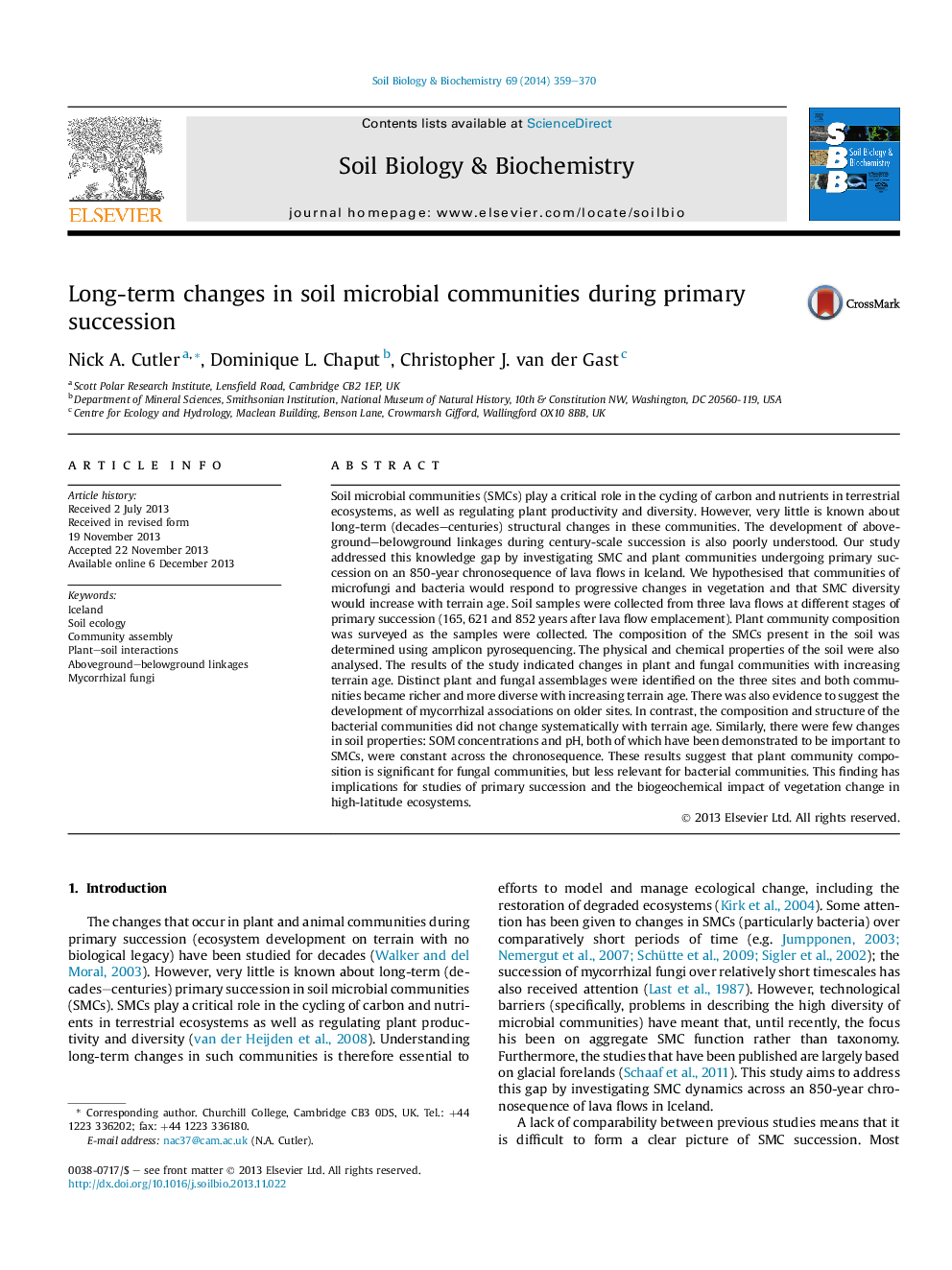| Article ID | Journal | Published Year | Pages | File Type |
|---|---|---|---|---|
| 2024746 | Soil Biology and Biochemistry | 2014 | 12 Pages |
•Long-term changes in SMCs were inferred from a chronosequence of lava flows.•The richness and diversity of plant and fungal communities increased with terrain age.•Soil properties did not change significantly with lava flow age.•Bacterial community structure did not vary with terrain age.•Plant succession was significant for soil fungi, but not bacteria.
Soil microbial communities (SMCs) play a critical role in the cycling of carbon and nutrients in terrestrial ecosystems, as well as regulating plant productivity and diversity. However, very little is known about long-term (decades–centuries) structural changes in these communities. The development of aboveground–belowground linkages during century-scale succession is also poorly understood. Our study addressed this knowledge gap by investigating SMC and plant communities undergoing primary succession on an 850-year chronosequence of lava flows in Iceland. We hypothesised that communities of microfungi and bacteria would respond to progressive changes in vegetation and that SMC diversity would increase with terrain age. Soil samples were collected from three lava flows at different stages of primary succession (165, 621 and 852 years after lava flow emplacement). Plant community composition was surveyed as the samples were collected. The composition of the SMCs present in the soil was determined using amplicon pyrosequencing. The physical and chemical properties of the soil were also analysed. The results of the study indicated changes in plant and fungal communities with increasing terrain age. Distinct plant and fungal assemblages were identified on the three sites and both communities became richer and more diverse with increasing terrain age. There was also evidence to suggest the development of mycorrhizal associations on older sites. In contrast, the composition and structure of the bacterial communities did not change systematically with terrain age. Similarly, there were few changes in soil properties: SOM concentrations and pH, both of which have been demonstrated to be important to SMCs, were constant across the chronosequence. These results suggest that plant community composition is significant for fungal communities, but less relevant for bacterial communities. This finding has implications for studies of primary succession and the biogeochemical impact of vegetation change in high-latitude ecosystems.
